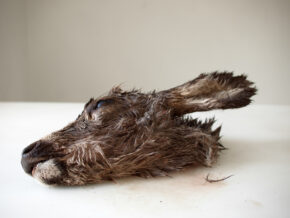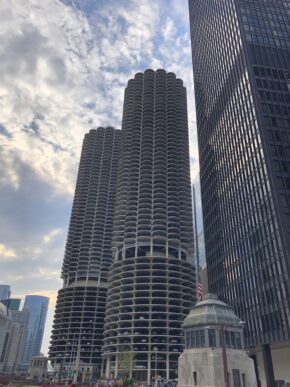 The weather in Tucson is brutally hot most of the time. 115 degrees Fahrenheit for almost 7 months a year, so they tell me. But the other five months are beautiful, when much of North America is freezing its collective ass off. Not being a lunatic, I’ve visited in October and February, and, as a result, love the place.
The weather in Tucson is brutally hot most of the time. 115 degrees Fahrenheit for almost 7 months a year, so they tell me. But the other five months are beautiful, when much of North America is freezing its collective ass off. Not being a lunatic, I’ve visited in October and February, and, as a result, love the place.
I was overdue for a visit to hang out with my good friend Ken, his wife Lisa, and their lovely daughter. Ken and I were chatting on the phone one day, and I made that all-too-familiar, non-specific promise to come “as soon as I can make it work.” Generic meaninglessness.
Ken then mentioned that the great Richard Misrach was due to lecture at the Center for Creative Photography, on the campus of the U of A. “Misrach, dude. Misrach,” was the final refrain of his argument. I stammered. No obvious excuse came to mind. “Uh, uh, Misrach, dude. You’re right. I’ll buy a plane ticket today.”
And so I found myself, earlier this Fall, fresh off the airplane, handing Ken a breakfast burrito from an Indian Casino outside Albuquerque. Before you say yuck, I got it only a couple of hours before, and it’s designed to keep in long-haul trucks on the Interstate. Delicious.
It couldn’t have been seven minutes from the time I stepped off the airplane to the time we were driving away in Ken’s Prius. The hybrid car is not as out-of-place as you might imagine in Super-Red-State Arizona. Tucson is actually a liberal island in a sea of anti-immigrant hostility. (Though these folks do have to live on the fringe of the Mexican Drug War, with a strong Mexican Mafia presence in town as well.)
I’ll spare you any more details on what he and I did in the handful of hours we had before the lecture. But cruising on the Prius-driving-tour gave me a bit of perspective on where the town is situated. The city is actually surrounded by mountains, and pretty ones at that. I’d rank it highly on the natural beauty scale. But that probably doesn’t matter if you’re sitting inside with your underwear pressed up against the air conditioning unit.
We turned up at the CCP about an hour before kickoff, to get some good seats reserved. And to catch up with the other artists that drove into town from California and Phoenix. People pay attention when a big dog pops his head out in public.
The lecture began soon enough, and the audience was both packed and silent. Seriously, I don’t think I’ve been in a quieter crowded lecture hall since taking final exams at Duke all those years ago. But this was fun instead of hysterically stressful.
Mr. Misrach structured the lecture as a linear narrative of the projects he’d done throughout his career. I was familiar with all of the earlier work, the Desert Cantos photos upon which he built his career. The Salton Sea. The fires. The Bravo 20 Bombing range pictures. The salt flats.
The projection was excellent, and the pictures looked amazing at 15’x15′, or whatever it was. It made me want to create super-giant prints, or do projection installations. Anything to achieve that powerful sense of scale. He claimed inspiration for the Cantos series, in which the projects interlock to inform each other and the whole, from Dante and Ezra Pound.
Mr. Misrach continued on through pretty pictures, like “Golden Gate” and “On the Beach,” and also showed newer things I’d not seen. Images from Hurricane Katrina’s aftermath, Iphone images, (of course,) and a return to working in Cancer Alley, Louisiana. The project, which began in the late nineties, originated as a commission from the High Museum in Atlanta.
I’d first seen one of the large scale color images at the now-defunct Friends of Photography in San Francisco many years ago. He showed dozens of these photos, each more compelling than the next. Factories, chemical plants, plantations, riverscapes, old shacks, all in that famously perfect light. I felt the work certainly on par with Edward Burtynsky’s photographs of corporate-sponsored environmental degradation.
I heard the first seat creaks from the crowd at the one hour mark, just as he was discussing his new Aperture book “Petrochemical America,” with design work by Kate Orff. Then, things took a strange turn. (And then stranger still, but I’ll get there.) Mr. Misrach wrapped up the lecture with a segment on the private salon he has at his studio with a handful of younger Bay Area Artists. He went on to show slides of their work, including Doug Rickard, Paul Schiek, Jason Fulford, and my previously-mentioned-friend McNair.
That the San Francisco collaborative scene made such a prominent appearance here in Tucson, just a couple of weeks after I was in SF, was totally surreal for me. I’m not sure people knew what to think. Was he promoting his younger buddies, blatantly, or showing off work that inspired and intrigued him? This was quickly followed by an excellent Q&A, in which Mr. Misrach seemed to enjoy responding directly, rather than sticking to the script.
Here are a few quotes I thought you’d find interesting. On the political impact of his work: “Whether they can change public policy? I don’t think that’s real.” On how he stayed safe in the dangerous situations in which he often found himself: “I was young and stupid.” On how he deals with delving into bleakness of eco-misery: “It’s a job.”
He also said, of art making, “the process is metaphysical.” Let me be the first to agree. Finally, speaking about switching from large format film photography to medium format digital, he said, “I’m making better pictures now than I could possibly do with an 8″x10″ negative.” Hard to believe, but I suppose he’s earned our suspension of disbelief.
Seconds after he finished speaking, Lisa waved to a friend, and her diamond engagement ring flew off her hand, in full view of dozens of people, and disappeared into thin air. I’m always telling my son that things don’t vanish, but it happened before my eyes. Fortunately, the ring was discovered a month later, in the bowels of the pocket book of the lady sitting next to her.
Then, we headed back to their place for a Taco Truck dinner, and a little impromptu, photo-geek-salon/taco fiesta. We had five photographers with five MFA’s between them: a Guggenheim Fellow, two artists showing at Klompching in Brooklyn, a photographer who went to school with Gregory Crewdson, and me.
The consensus on the lecture was that Mr. Misrach was too literal and linear, and didn’t provide inspiration for my colleagues. His target audience was clearly the many young college students in attendance, who were likely less familiar with his canon than we. Alec Soth was suggested as a model of the inspirational lecturer, as several of the photographers had recently seen him speak at the Medium Festival in San Diego.
Personally, I hung on Mr. Misrach’s every word. Beyond the countless incredible photographs, and the consistently relevant issues, seeing that many years of production inspired me. Just do the work, he implied. Keep doing the work. It was kind of Zen.
Back at our round-table, I mentioned the Cindy Sherman show at SFMOMA, and we kicked around comparisons of major artists who’ve lost it and got it back again. Robert Mapplethorpe came up in the photo world, but most comps were to music. Bob Dylan, Bruce Springsteen.
Finally, someone asked the following question, with which I will leave you. (Feel free to discuss it amongst yourselves.) Over time, what costs more, having a child, or an art career?






3 Comments
This is not to start a film/digital debate! But I was curious when I read he switched from 8×10 to digital and said he was taking better pictures. Obviously your quote was probably highly summarized so who knows how much more he spoke about it. So, I did some looking and found this comment from him in an interview:
“It is different. I don’t have the quality that I had, but the quality of the image is still good”
Of course “making better images” as he said has nothing to do with the quality of the “file”/film.
As to why he switched:
I was shooting with my 8×10 after Katrina for 12-14 hours, from dawn to dusk, over a three month period. I was pushing hard and blew a disc in my back. I was unable to lift anything for ten months. I not only had to throw in the towel on what was going to be a long term project, but I had to consider alternatives to the 8×10. I started testing a medium format camera with a digital back. And that was that.
Full interview here:
http://bit.ly/XbVQAZ
[…] hot most of the time. 115 degrees Fahrenheit for almost 7 months a year, so they tell me.See on plain-glass.flywheelsites.com Share This Page: This entry was posted in News and tagged Draft, maire, Mayor, Montreal, […]
I like the write up on your trip. Tucson is not that bad in the hot months. The 115 is a dry heat except during monsoon season, then it feels like I was back in Panama City and the unbearable summer days of 90+/95%. I am sorry that I missed this lecture though, it would have given me an excuse to visit my kids who still live in Tucson. I do have to say since my kids are now grown and I have grandchildren an art career is far cheaper that the costs of raising them. Then again I didn’t start as young as you JB.
Comments are closed for this article!